Diana Vandeyar is an Australian-born artist who relocated to Virginia from South Africa. She uses quilts to raise awareness of social injustices, stir emotion, and explore new techniques. In fact, two of Diana’s quilts have been purchased by the Michigan State University Museum as part of their permanent collection. Diana is a frequent contributor to the Modern Quilt Guild, with her patterns being featured as block and quilts of the month. Diana’s quilts and designs have been published in numerous places, among them, Modern Quilts: Deisgns of the New Century; Simply Moderne Magazine; 50 Little Gifts: Easy Patchwork Projects to Give or Swap; Curated Quilts; and QuiltCon Magazine. Diana won both second and third place in the Modern Traditionalism category at QuiltCon 2018, and her quilt Log Cabin Quilter Unknown was month the MQG’s showcase at the International Quilt Festival 2017. Welcome, Diana!
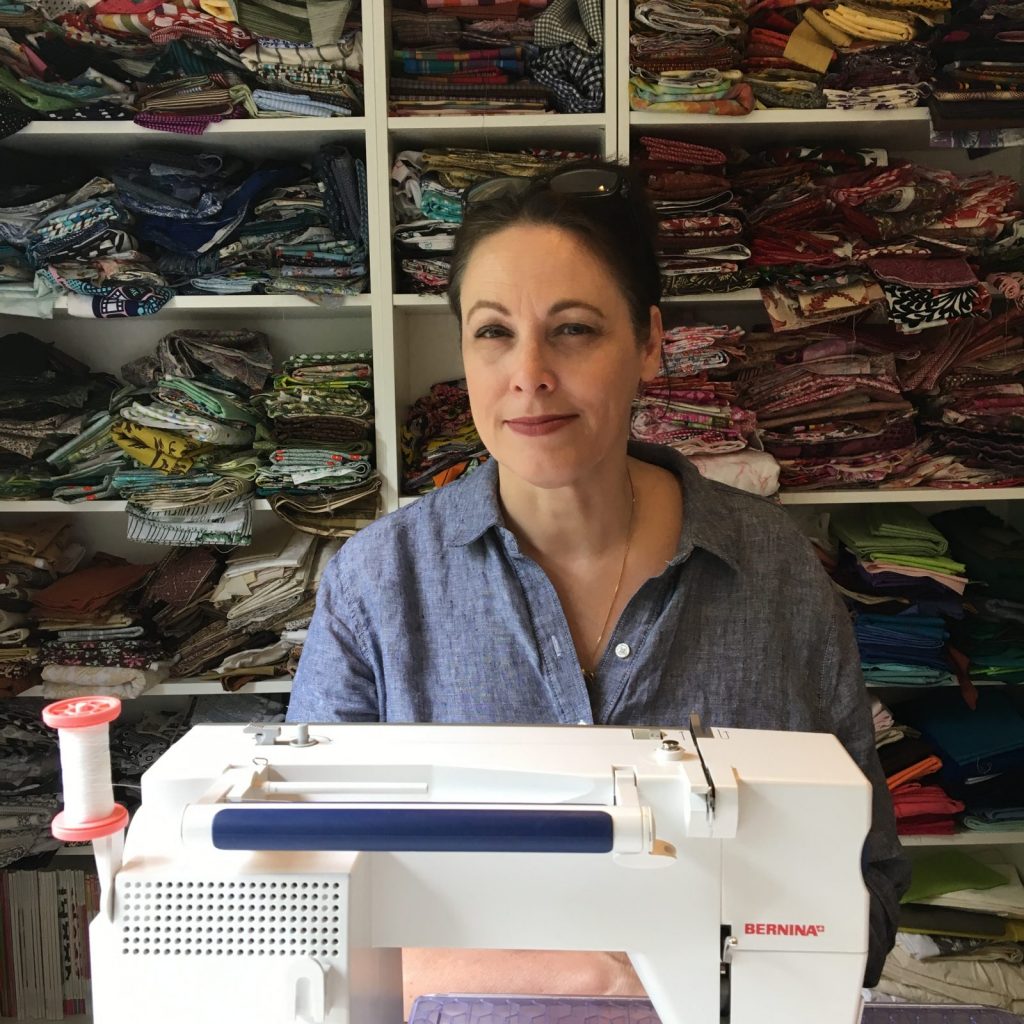
How would you describe your quilting style/aesthetic?
Diana: I would say my style is modern traditionalism with a bit of geometric. I have a deep appreciation for graphic design and the eclectic which is reflected in my quilts. I love to explore the juxtaposition of contemporary techniques and textural elements with traditional motifs – the old with the new, the traditional with the modern, and the sentimental with the bold. Oh, and if I can add a bit of social commentary that’s good for me, too.
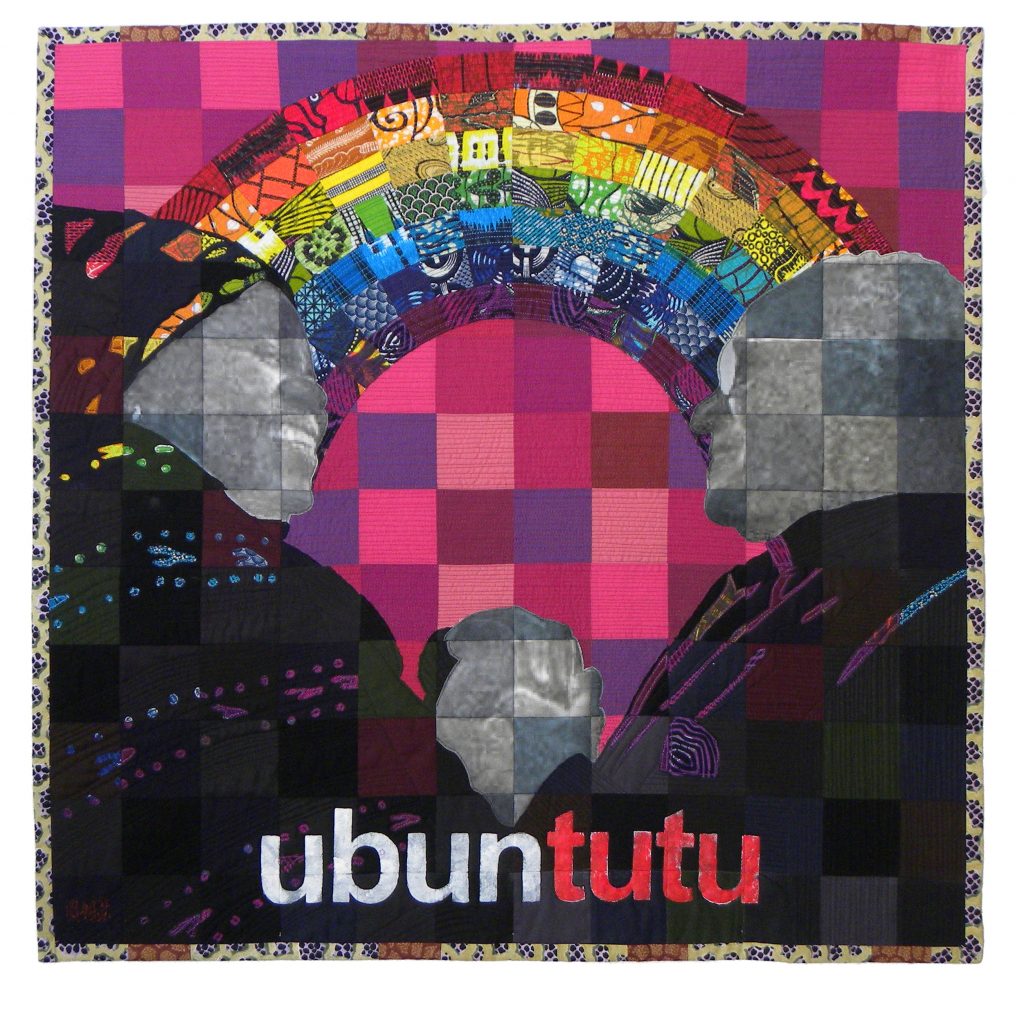
Ubuntutu. This quilt has been purchased by the Michigan State University Museum. Image courtesy of Diana Vandeyar.
How would you describe the creative environment in your home as a child?
Diana: My parents let me pursue any fancy that came my way. They were, and are, very supportive of my creativity. They changed my bedroom color schemes and aesthetics without questioning my choices. They let me paint bedroom doors in wacky designs and did not say a word (as far as I remember) when I lost interest and left projects half done (my dad just replaced my brother’s bedroom door with a spare door he had in the garage!).
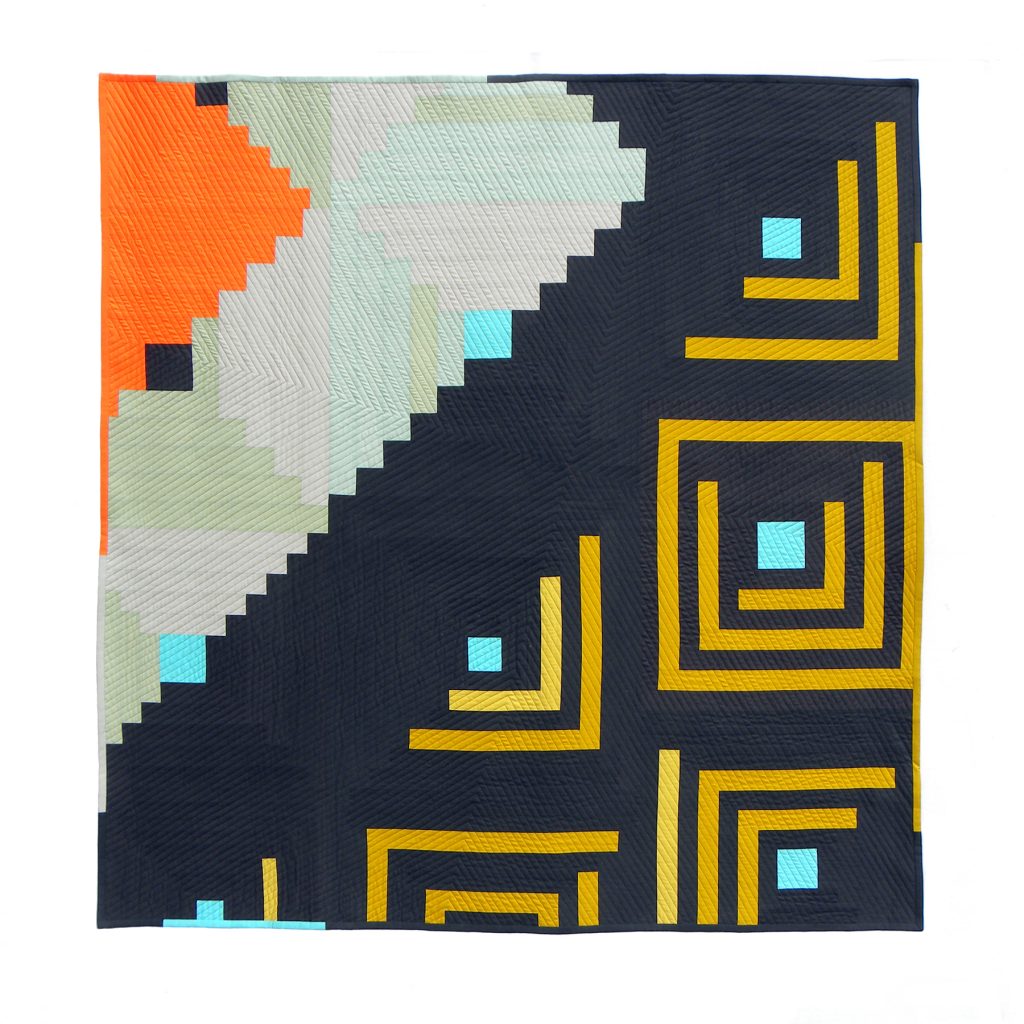
Log Cabin, Quilter Unknown. Image courtesy of Diana Vendeyar.
Do you consider yourself a “quilter”, an artist, or some combination of both?
Diana: Definitely, all of the above. I have made pottery, screen printed, dyed fabric, painted (in various mediums), photographed, embroidered, decorated and sewn. I am always thinking about color, composition and design – whether it is in an art piece or the layout of a room. Being a “quilter” is just another genre and, yes, I am that too.
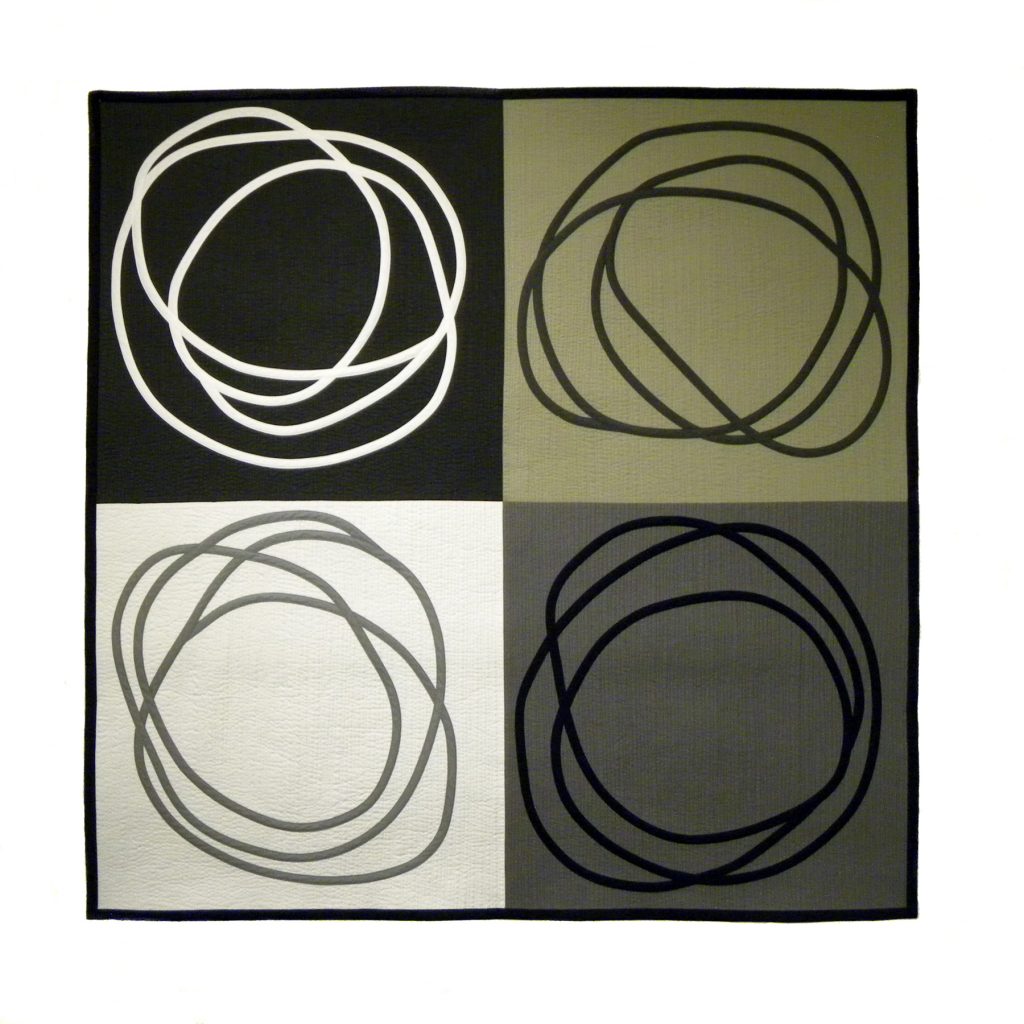
Rats Nest. Image courtesy of Diana Vandeyar.
How would you define “making with intention”?
Diana: “Making with intention” to me means starting with an idea. I guess all my work is made with intention. I never start cutting and sewing with no thought about what the outcome will be. I do a lot of thinking and planning in my head (usually when I’m trying to fall asleep) and actually, most times I can visualize what the finished piece will be. That does not mean to say that my “ready formed idea” cannot be hijacked by how the piece is developing. Which sometimes means that I must let go of my preconceived ideas, which is not easy to do. I strongly believe in letting the work “speak” to you – sometimes it has a mind of its own. I may need to wait a day, a week, or longer for a piece to finally give up what it wants.
I love working with limitations and with what I have on hand. I never have the “right” shade or type of fabric in my stash for my ideal design. Ordering fabric online or going to a store is a non-issue as I could never wait that long when I need to make. I work with what I have and adjust the contrasts and colors so that the effect will be the same.
I love to puzzle technical solutions that do not involve an easy fix and find that those stubborn problems result in some of my best work.
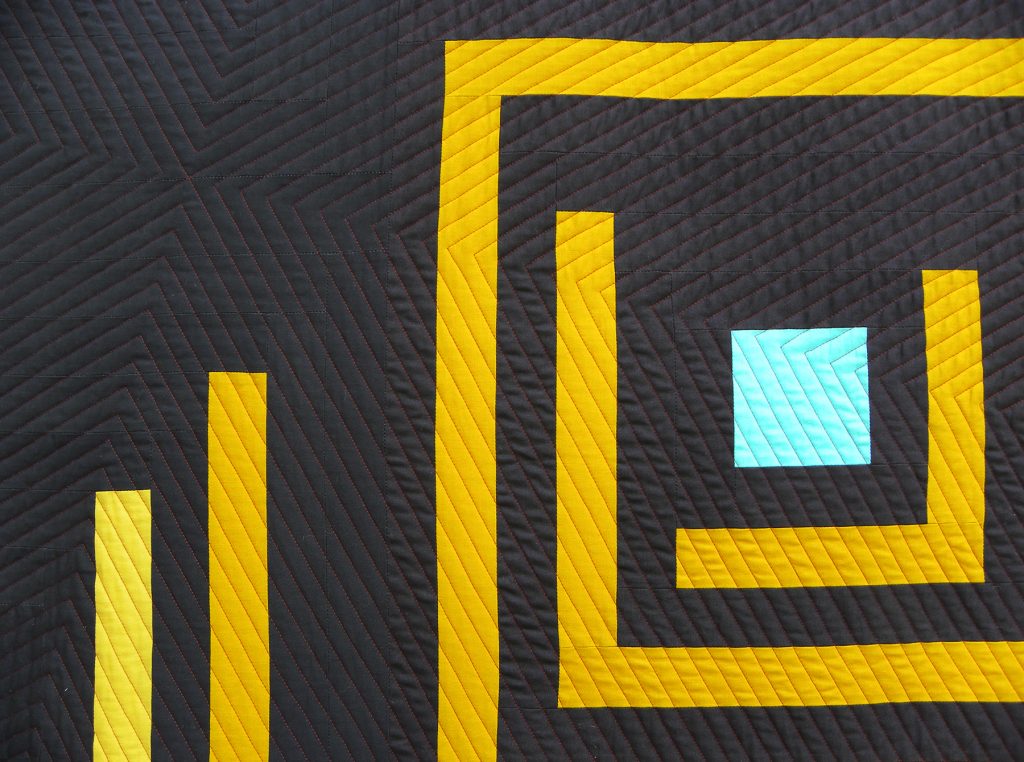
Log Cabin, Quilter Unknown (detail). Image courtesy of Diana Vandeyar.
Do you think that having a craft makes us more compassionate? If so, then how?
Diana: I don’t know if having a craft makes us more compassionate, but I think that compassionate people are more artistic.
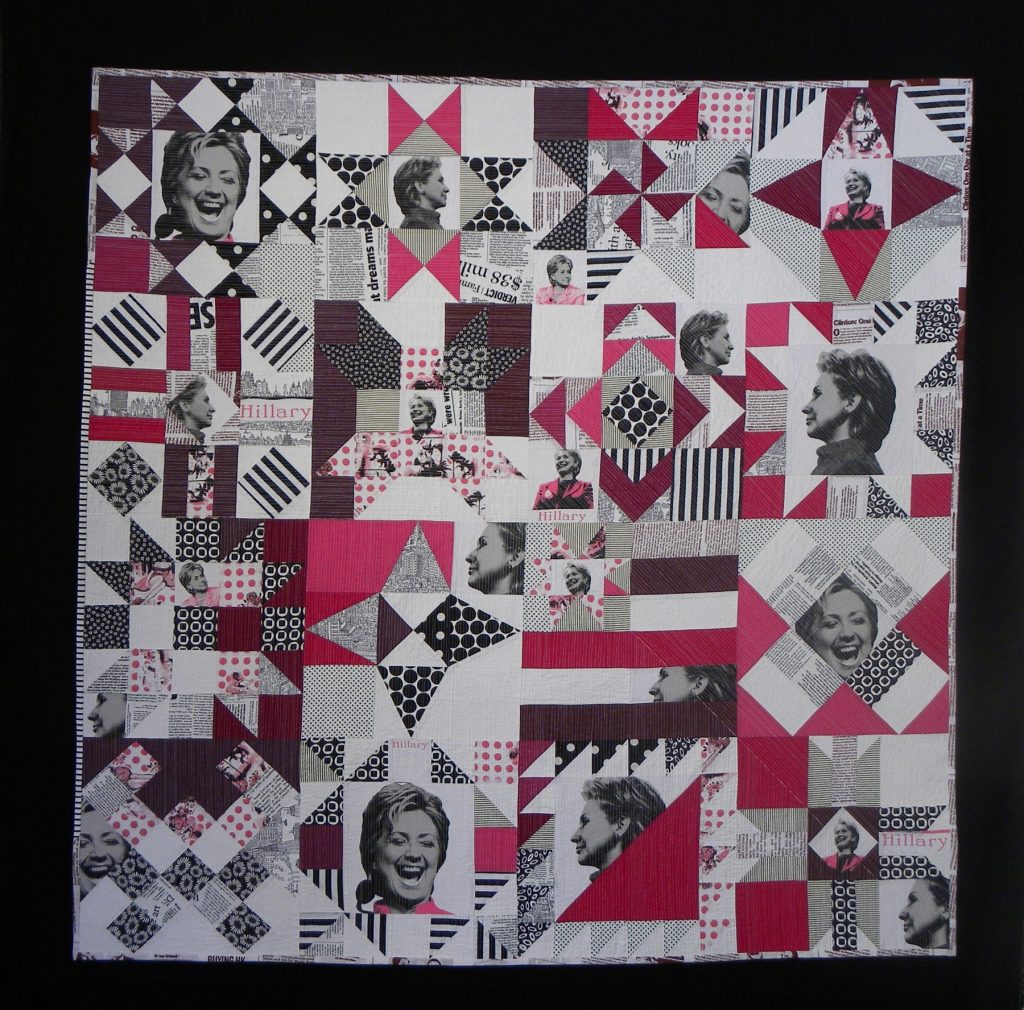
Hillary Quilton. Image courtesy of Diana Vandeyar.
Are there any rituals that you perform to prepare/ground yourself in your work?
Diana: For me there are two types of work: mechanical and creative. When my head is full of day-to-day life, I find that doing work that requires little thought (like chain-piecing or following a simple pattern) clears my head so that I can let in the creativity. I cannot listen to music or podcasts when I’m being creative, I need to be with myself and listen to the work that is developing. When I’m committed, I don’t hear or think about anything else.
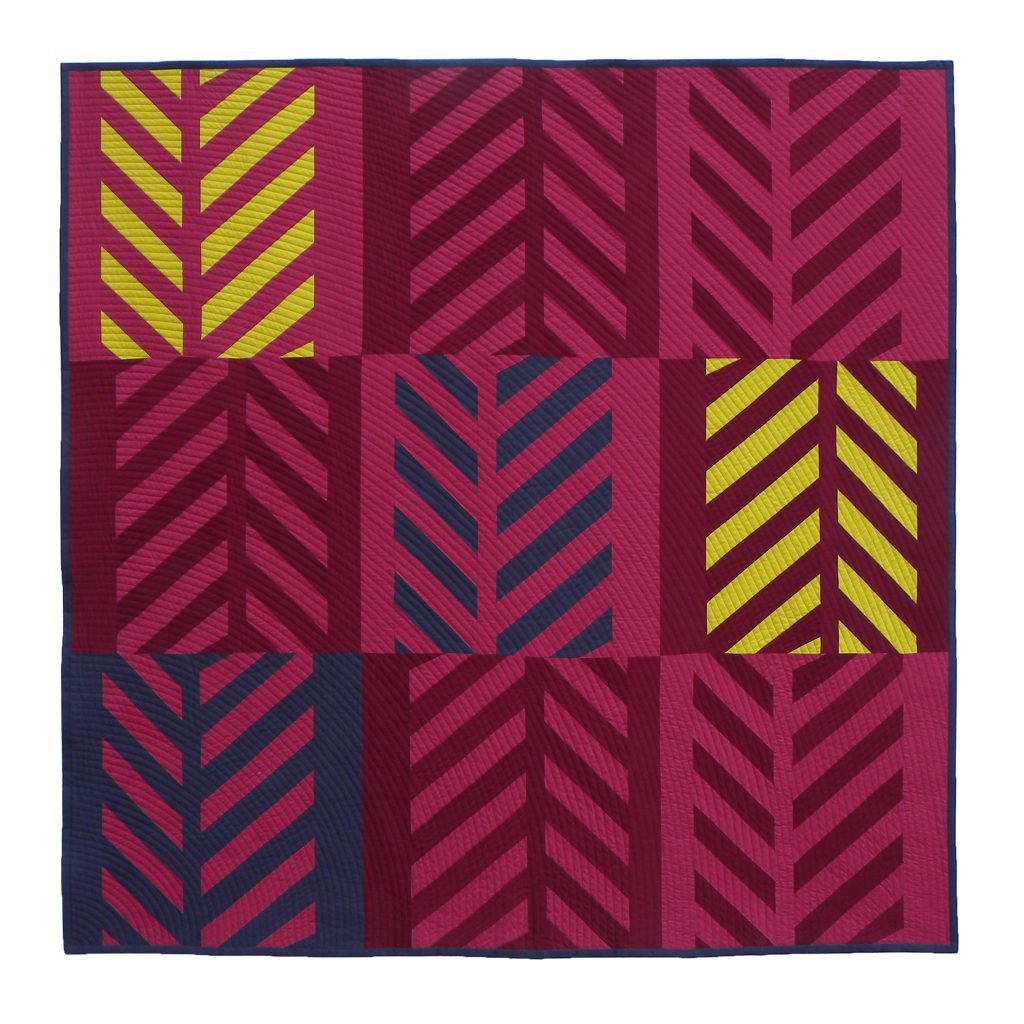
Oblique. This quilt was the February 2017 Quilt of the Month for the Modern Quilt Guild. Image courtesy of Diana Vandeyar.
How do you deal with comparison to / envy of others? Can you describe a time when you used comparison/envy/admiration to push yourself in your own work and self-discovery?
Diana: In this social media driven society it is very difficult not compare and covet other people’s ideas and work. The story below is all about a bad case of improv envy.
I wanted to take an improv class by a well-known artist and because of personal constraints it was not possible. It would have been super fantastically great to meet her, bask in her all knowingness and learn from her. I was annoyed at my circumstances and told myself (in order to feel better) that I really did not need to take the class, that I knew already how to do improv. So why hadn’t I done something cool with improv? Answer: because it’s all been done before – strips, log cabins, hour glass, curves, petal shapes, etc. etc. … or has it? I started to search the internet for improv hexagons to confirm my idea that it’s all been done before. I found a handful of techniques but not the one that was in my head. Fast forward, QuiltCon 2018, Modern Traditionalism Category, Second Place!
Please no hate mail. I’m not trying to take anything away from all the fabulous, hardworking and creative teachers who travel the world sharing their techniques. Furthermore, I’m not suggesting copying ideas or patterns just because you know how something is made. I think it is important to support talent by taking classes and buying books and patterns.
For me, quilting is not just about being original, it’s also about honing skills, learning something and connecting with likeminded people. I often make patterns from other quilters. I love to connect with them by walking in their shoes through a project, seeing how their creative process works and honoring their great work.
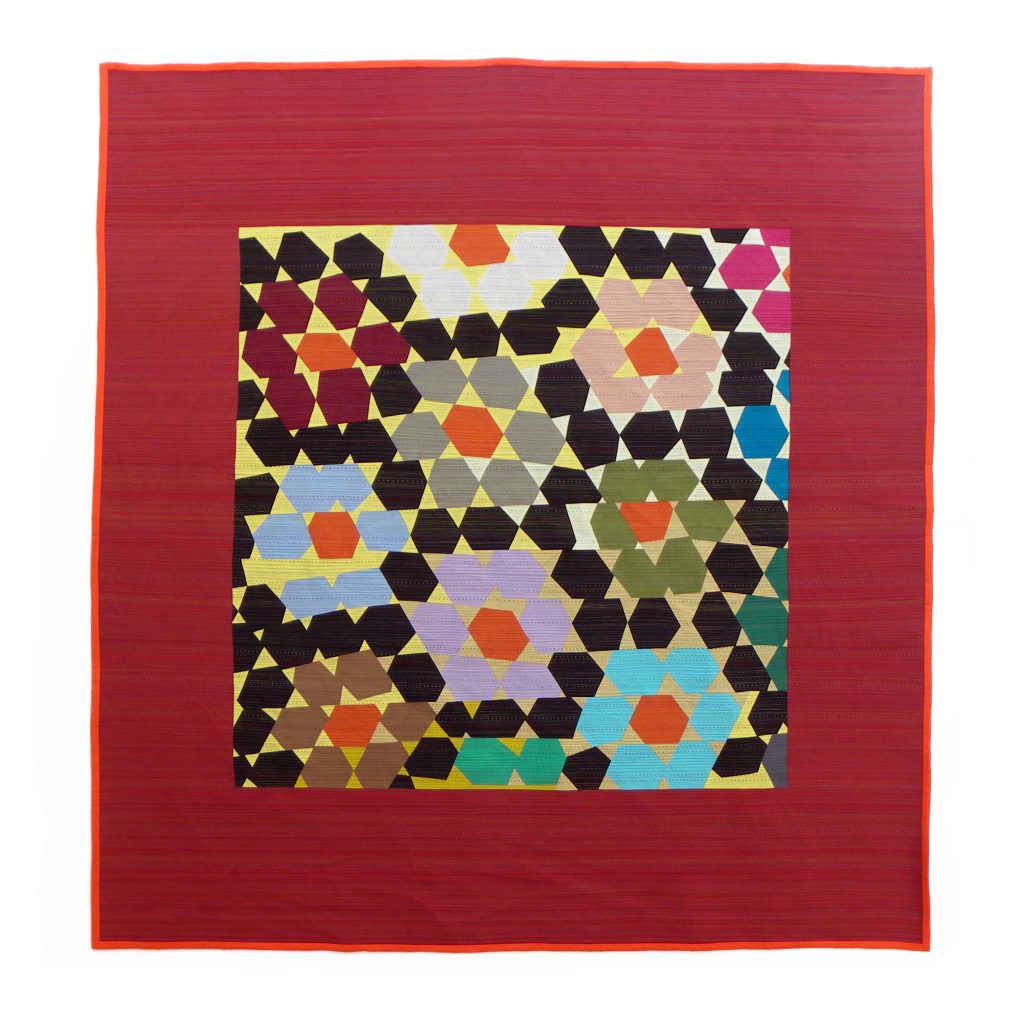
Grandmother’s Life On Mars. Image courtesy of Diana Vandeyar.
What was the most challenging thing you ever made?
Diana: The improv hexagon quilt “Grandmother’s Life on Mars” mentioned above was the most technically challenging quilt I have made. But I love a good puzzle, working out how things fit together and conquering the enigma. That’s part of the fun for me.
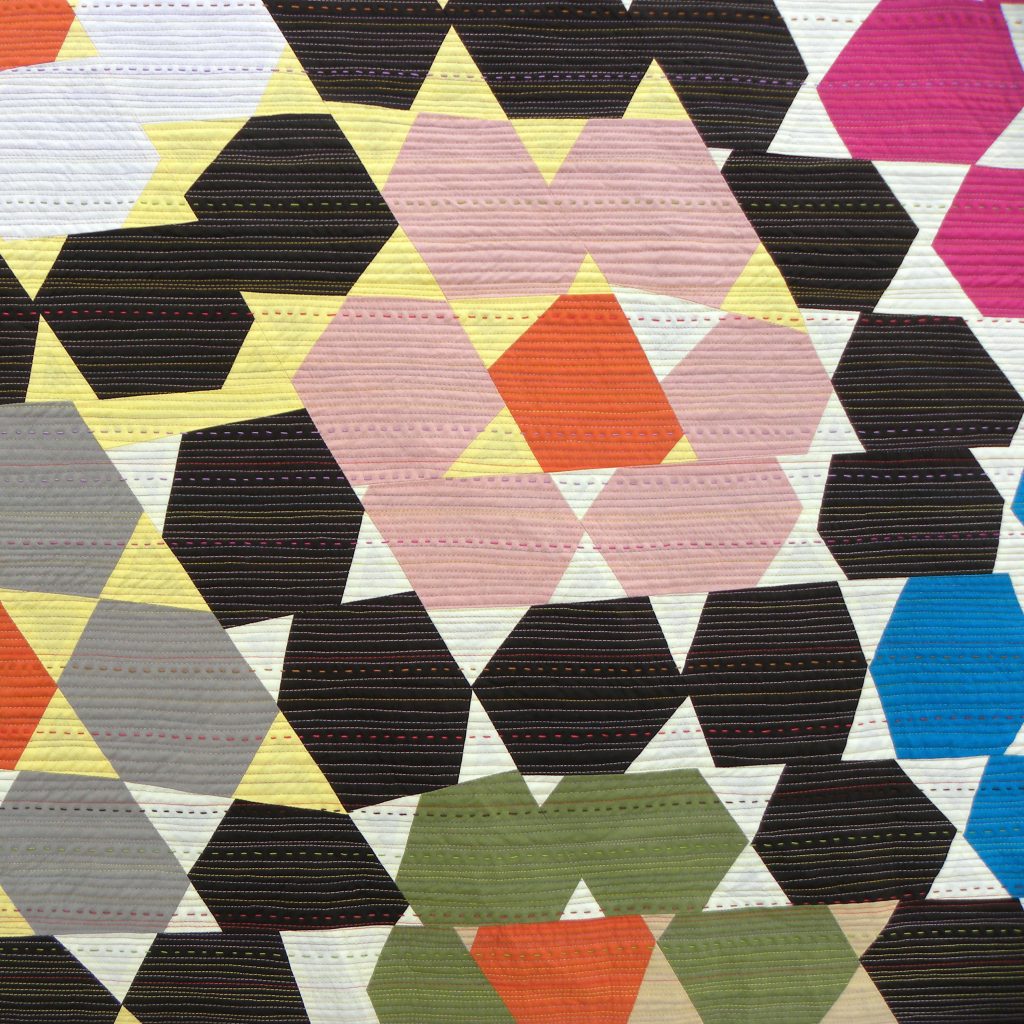
Grandmother’s Life On Mars (Detail). Image courtesy of Diana Vandeyar.
What does it mean to you to work in a traditionally domestic medium that historically has been regarded as predominately female (aka “women’s work”)?
Diana: [Kim: this is not a dig at your question 😊 <3]
I could write that the way this question is phrased makes it sound like a negative concept. That we should stop putting “women’s work” in quotation marks. That using a phrase like “historically regarded” drags us back instead of pushing us forward. But instead I’ll write:
I could not be prouder. I come from a long line of seamstress and tailors. Needles and thread were always in my home. The hum of a sewing machine is heaven to me. Patterns, tape measures and pin make my heart sing. Fabric scraps were my favorite play things as a child. The love that is sewn into a piece of clothing or a quilt is immeasurable.
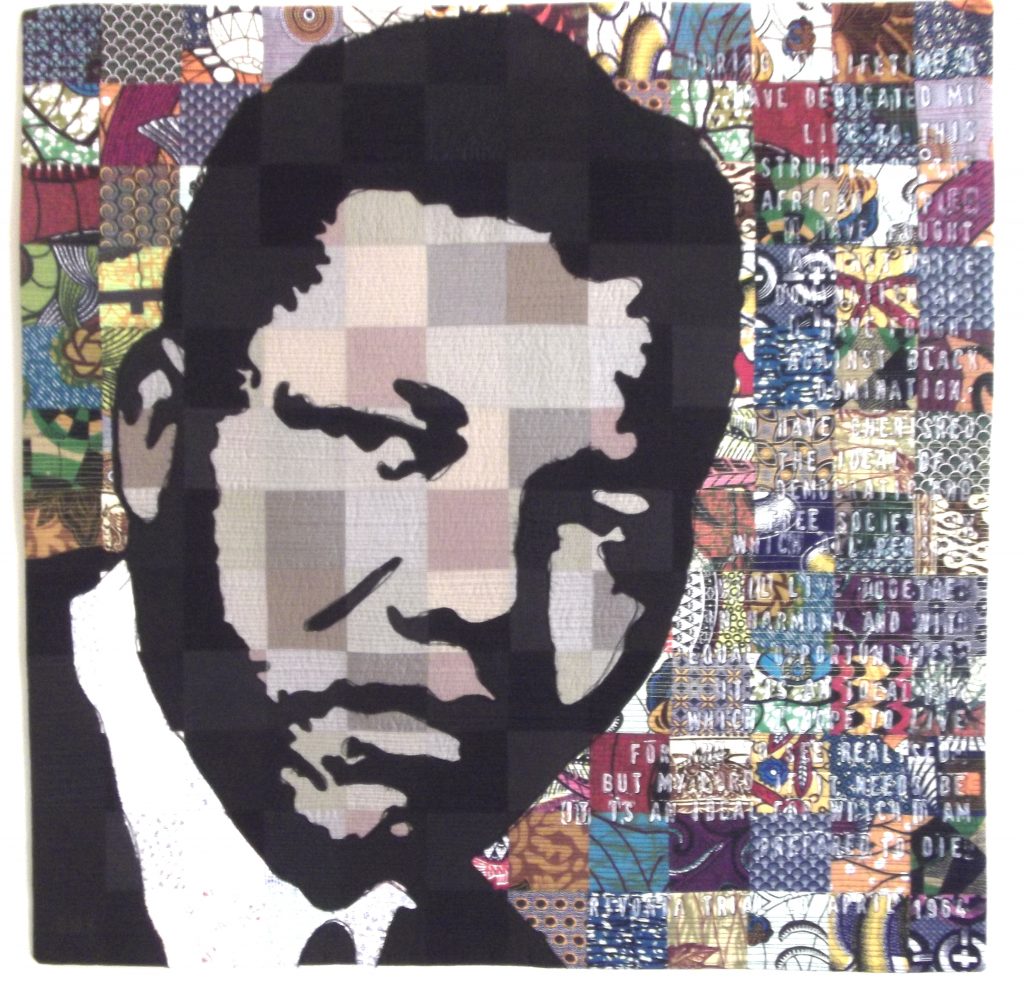
Portrait of a Man Who Will Change the World. This quilt has been purchased by the Michigan State University Museum. Image courtesy of Diana Vandeyar.
How do you see your current work in the context of quilting history?
Diana: My work specifically may not impact quilting history – but the new modern quilting movement will definitely rate. Each quilter contributes and drives the quilting movement in a particular direction. Whether we make traditional, art or modern quilts, quilting history is on the move and growing – which is fabulous!
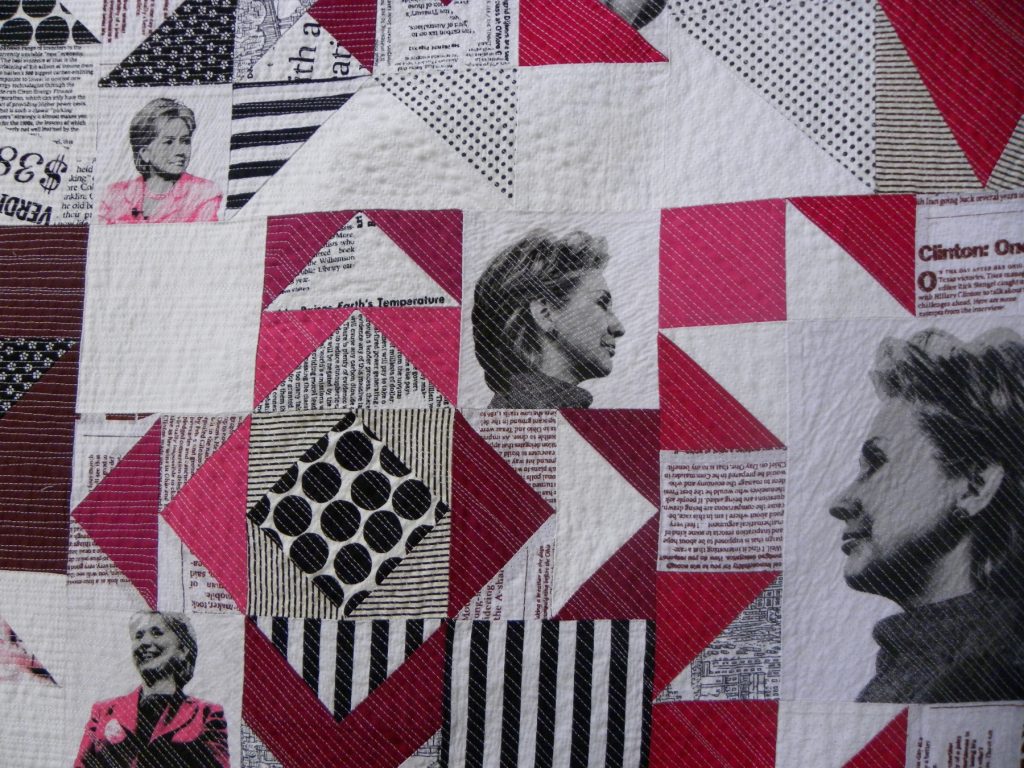
Hillary Quilton (Detail). Image courtesy of Diana Vandeyar.
Thank you, Diana! It was a treat to learn more about you. To keep up with Diana, you can follow her on Instagram.
Would you like to be featured in The Creativity Project? Reach out! I’d love to hear from you! Contact me.
Want to participate, but not necessarily be featured? You can do that! Click here to take the survey!
The Creativity Project can be found on Instagram, Pinterest, Twitter or Bloglovin’. Or check back here every Friday of 2018!
2 Comments
Comments are closed.

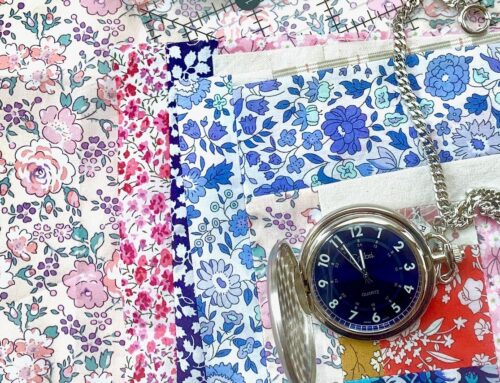
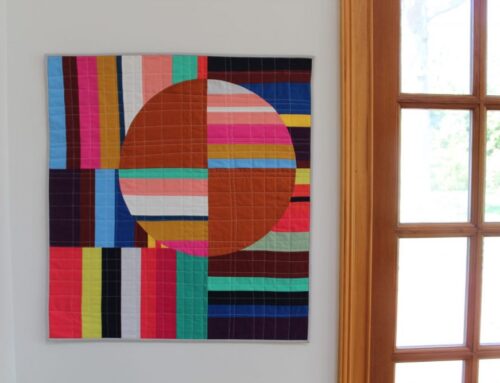
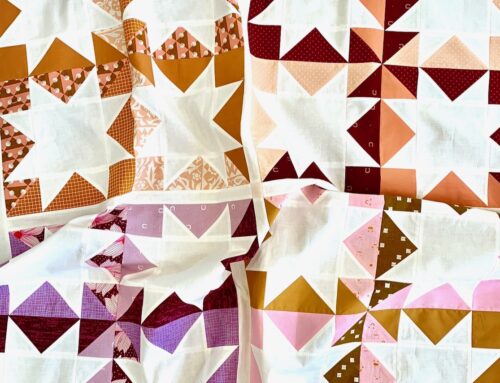

“I love working with limitations.” It is such a good reminder that working with constraints or limitations can be rewarding creatively!
Thanks Yvonne! Agree completely. Sometimes giving yourself “rules” can spark the most creativity.